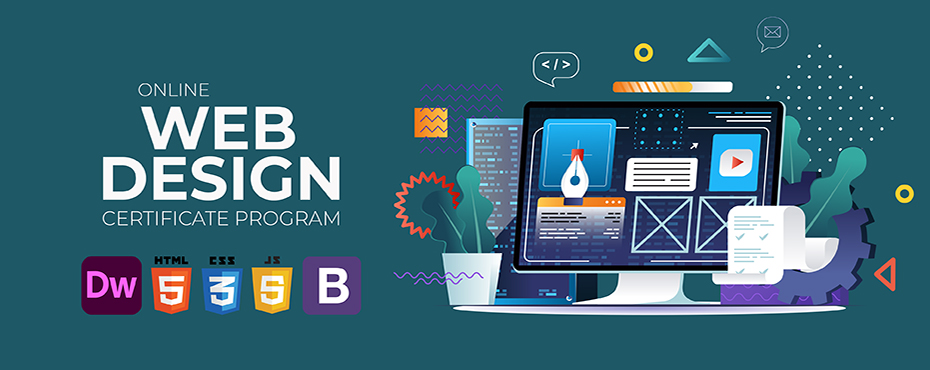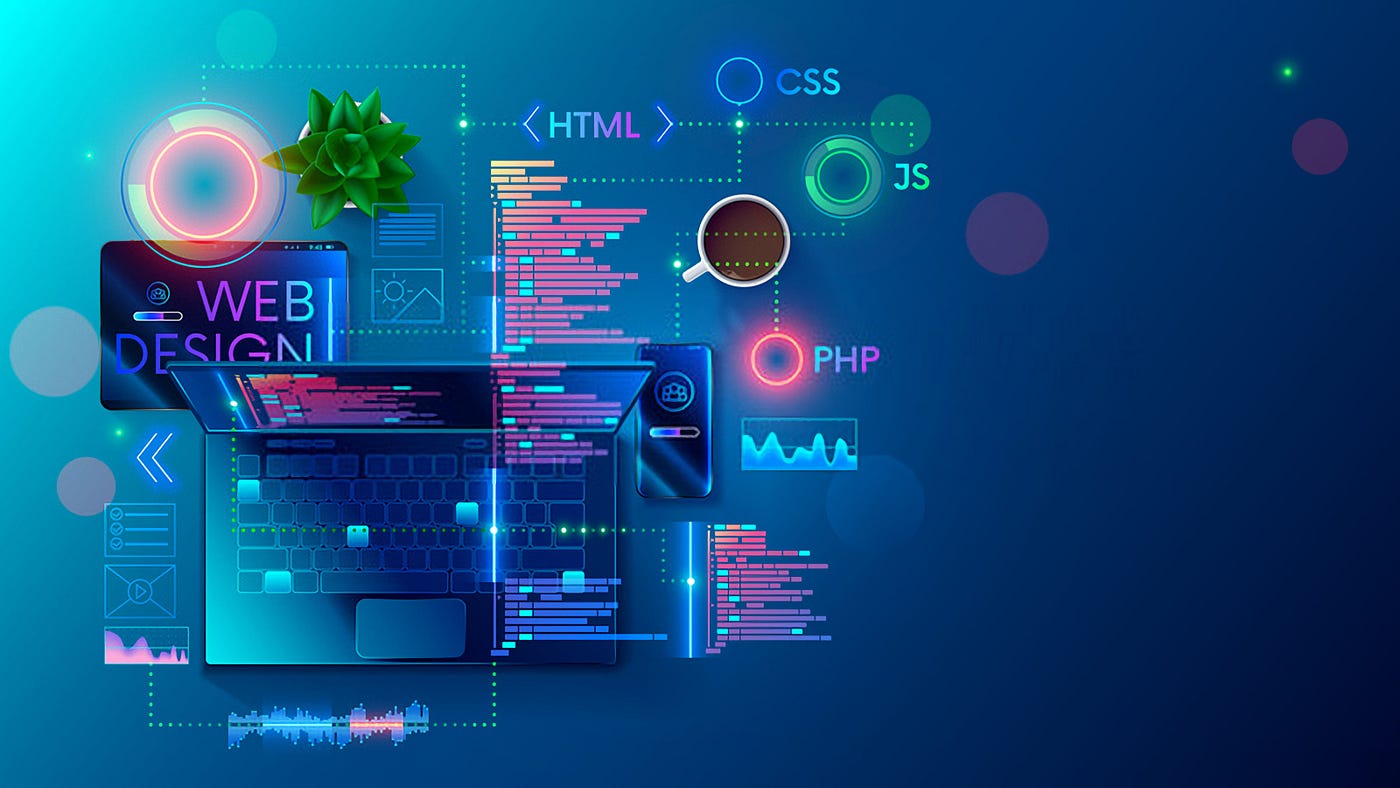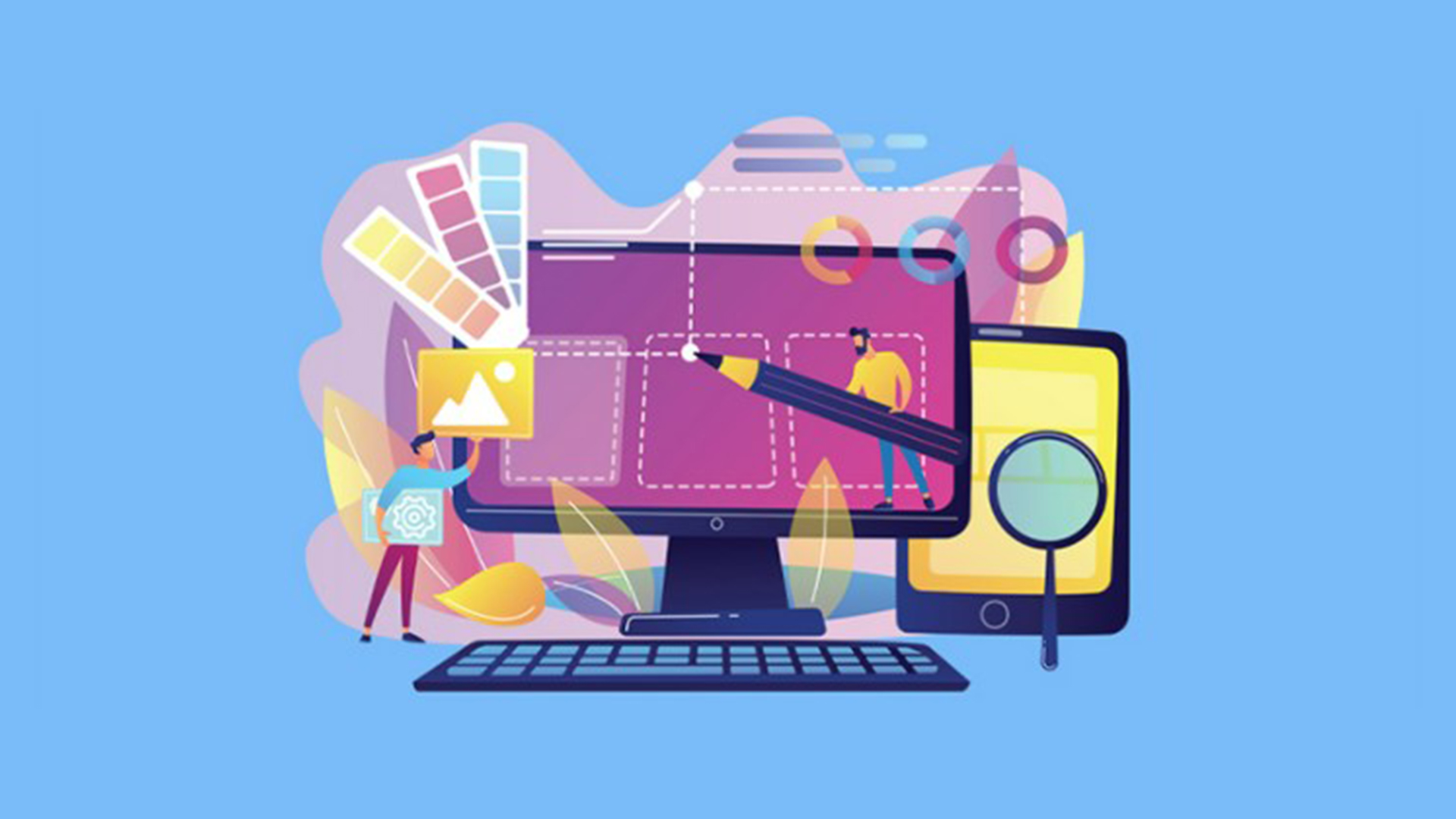All Categories
Featured
Table of Contents
- – Web Design Courses & Tutorials - Codecademy Ti...
- – Penner Home - Durham Web Design - Penner Web ...
- – 12 Essential Tips For Improving Your Web Desi...
- – The Leader In Website Design – Squarespace Ti...
- – Web Design Services - Networksolutions.com Ti...
- – Basics Of Web Development & Coding Specializa...
- – Web Design Services + Website Development Ag...
- – Ciw Web Design Series Tips and Tricks:
- – Otc Web Design Girdwood, Alaska - Web Design...
- – Web Design Studio & Digital Marketing Agency...
- – Web Design Courses & Tutorials - Codecademy ...
Web Design Courses & Tutorials - Codecademy Tips and Tricks:
Quick summary Usability and the energy, not the visual design, identify the success or failure of a site. Given that the visitor of the page is the only individual who clicks the mouse and for that reason chooses whatever, user-centric style has developed as a standard approach for effective and profit-oriented web design - web design frederick md.
and the energy, not the visual style, identify the success or failure of a website. Considering that the visitor of the page is the only person who clicks the mouse and therefore chooses whatever, user-centric style has actually become a standard technique for effective and profit-oriented website design. If users can't utilize a function, it may as well not exist.
g. where the search box must be placed) as it has actually already been done in a variety of posts; rather we concentrate on the approaches which, utilized correctly, can cause more advanced style decisions and streamline the process of viewing provided information. Please observe that you may be interested in the usability-related short articles we have actually published before: Principles Of Great Site Design And Efficient Website Design Guidelines, In order to use the principles properly we initially require to understand how users connect with websites, how they think and what are the basic patterns of users' habits.
Penner Home - Durham Web Design - Penner Web Design ... Tips and Tricks:
Visitors look at each new page, scan some of the text, and click on the first link that catches their interest or slightly resembles the important things they're trying to find. In reality, there are big parts of the page they do not even take a look at. Most users search for something interesting (or useful) and clickable; as quickly as some appealing prospects are found, users click.
If a page provides users with high-quality material, they are ready to compromise the content with advertisements and the design of the website. This is the reason not-that-well-designed sites with top quality content gain a lot of traffic over years. Material is more vital than the style which supports it.

Really basic principle: If a website isn't able to fulfill users' expectations, then designer stopped working to get his task done correctly and the company loses cash. The higher is the cognitive load and the less instinctive is the navigation, the more willing are users to leave the website and search for alternatives.
12 Essential Tips For Improving Your Web Design In 2022 Tips and Tricks:
Neither do they scan web page in a linear fashion, going sequentially from one website section to another one. Instead users satisfice; they select the very first reasonable option. As quickly as they find a link that looks like it might result in the goal, there is a great chance that it will be instantly clicked.
It does not matter to us if we understand how things work, as long as we can use them. If your audience is going to act like you're designing billboard, then style terrific billboards." Users desire to be able to manage their browser and rely on the consistent information presentation throughout the website.
If the navigation and site architecture aren't intuitive, the variety of enigma grows and makes it harder for users to comprehend how the system works and how to get from point A to point B. A clear structure, moderate visual hints and easily identifiable links can help users to find their path to their aim.
The Leader In Website Design – Squarespace Tips and Tricks:

claims to be "beyond channels, beyond products, beyond distribution". What does it indicate? Since users tend to check out sites according to the "F"-pattern, these three statements would be the first elements users will see on the page once it is packed. Although the design itself is simple and intuitive, to understand what the page is about the user requires to search for the answer.
As soon as you've attained this, you can interact why the system is useful and how users can benefit from it. People won't use your website if they can't discover their method around it. 2. Don't Misuse Users' Patience, In every job when you are going to use your visitors some service or tool, attempt to keep your user requirements minimal.
First-time visitors want to, not filling long web forms for an account they might never utilize in the future. Let users check out the site and find your services without requiring them into sharing private information. It's not sensible to require users to get in an e-mail address to evaluate the function.
Web Design Services - Networksolutions.com Tips and Tricks:
Stikkit is a best example for an easy to use service which requires practically nothing from the visitor which is unobtrusive and soothing. And that's what you desire your users to feel on your website. Obviously, Termite requires more. However the registration can be done in less than 30 seconds as the type has horizontal orientation, the user does not even need to scroll the page.
A user registration alone is adequate of an obstacle to user navigation to cut down on incoming traffic. 3. Manage To Focus Users' Attention, As sites offer both static and dynamic content, some elements of the interface attract attention more than others do. Certainly, images are more captivating than the text just as the sentences marked as strong are more appealing than plain text.
Focusing users' attention to specific locations of the site with a moderate usage of visual components can help your visitors to obtain from point A to point B without thinking of how it in fact is expected to be done. The less question marks visitors have, the they have and the more trust they can establish towards the business the website represents.
Basics Of Web Development & Coding Specialization - Coursera Tips and Tricks:
4. Strive For Function Exposure, Modern website design are usually criticized due to their approach of guiding users with aesthetically appealing 1-2-3-done-steps, large buttons with visual results etc. But from the design viewpoint these elements really aren't a bad thing. On the contrary, such as they lead the visitors through the site material in an extremely simple and easy to use method.
The site has 9 primary navigation alternatives which show up at the very first look. The option of colors might be too light, though. is an essential principle of successful user interface style. It doesn't truly matter how this is achieved. What matters is that the content is well-understood and visitors feel comfortable with the method they connect with the system.
com gets directly to the point. No cute words, no exaggerated statements. Rather a cost: simply what visitors are looking for. An optimal option for efficient writing is touse short and concise phrases (come to the point as quickly as possible), usage scannable design (categorize the content, use several heading levels, use visual elements and bulleted lists which break the circulation of uniform text blocks), usage plain and objective language (a promotion doesn't need to sound like advertisement; offer your users some affordable and objective reason why they ought to use your service or remain on your site)6.
Web Design Services + Website Development Agency Tips and Tricks:
Users are hardly ever on a website to take pleasure in the design; moreover, for the most part they are looking for the details regardless of the design - web design frederick md. Make every effort for simplicity rather of intricacy. From the visitors' viewpoint, the finest website design is a pure text, with no ads or more material blocks matching precisely the question visitors used or the content they've been searching for.
Finch clearly presents the information about the website and provides visitors an option of alternatives without overcrowding them with unnecessary content. Not only does it assist to for the visitors, however it makes it possible to view the information presented on the screen.
Complex structures are more difficult to check out, scan, analyze and work with. If you have the choice in between separating two style segments by a visible line or by some whitespace, it's typically better to utilize the whitespace option. (Simon's Law): the much better you handle to supply users with a sense of visual hierarchy, the easier your material will be to perceive.
Ciw Web Design Series Tips and Tricks:
The same conventions and guidelines should be applied to all elements.: do the most with the least amount of cues and visual elements. Four significant points to be thought about: simplicity, clarity, diversity, and focus. Simplicity consists of just the elements that are most crucial for communication. Clearness: all parts must be developed so their significance is not unclear.
Conventions Are Our Buddies, Traditional design of site aspects does not lead to an uninteresting web website. In truth, as they reduce the learning curve, the requirement to find out how things work. For example, it would be an usability headache if all websites had various visual presentation of RSS-feeds. That's not that various from our routine life where we tend to get utilized to fundamental concepts of how we organize information (folders) or do shopping (placement of products).
understand what they're anticipating from a website navigation, text structure, search positioning etc. A case in point from usability sessions is to equate the page in Japanese (assuming your web users do not understand Japanese, e. g. with Babelfish) and offer your use testers with a job to find something in the page of different language.
Otc Web Design Girdwood, Alaska - Web Design & Google ... Tips and Tricks:
Test Early, Test Frequently, This so-called TETO-principle must be used to every web design task as usability tests typically offer into significant issues and issues related to a given design. Test not too late, not too little and not for the incorrect reasons.
Some crucial indicate remember: according to Steve Krug, and screening one user early in the project is better than testing 50 near completion. Accoring to Boehm's very first law, errors are most regular during requirements and design activities and are the more pricey the later they are removed.
That implies that you develop something, test it, repair it and then check it again. There may be problems which have not been found throughout the preliminary as users were virtually blocked by other issues. functionality tests. Either you'll be indicated the issues you have or you'll be pointed to the absence of significant style defects which remains in both cases a beneficial insight for your project.
Web Design Studio & Digital Marketing Agency • Gravitate Tips and Tricks:

This holds for designers. After you've worked on a website for few weeks, you can't observe it from a fresh point of view any longer. You understand how it is constructed and therefore you understand precisely how it works you have the wisdom independent testers and visitors of your website would not have.
It can be connected to other areas such as graphic design, user experience, and multimedia arts, however is more aptly seen from a technological perspective. It has become a large part of individuals's everyday lives. It is difficult to imagine the Internet without animated graphics, various designs of typography, background, videos and music.

During 1991 to 1993 the World Wide Web was born. Text-only pages could be seen utilizing a basic line-mode internet browser. There had actually been no integrated technique to graphic design aspects such as images or noises.
Web Design Courses & Tutorials - Codecademy Tips and Tricks:
The W3C was created in October 1994 to "lead the Web to its complete potential by developing common procedures that promote its advancement and guarantee its interoperability." This prevented any one company from monopolizing a propriety web browser and programs language, which might have changed the impact of the Web as a whole.
As this has actually taken place the technology of the web has also moved on. There have actually likewise been considerable changes in the method people utilize and access the web, and this has actually changed how websites are developed.
Learn more about Lovell Media Group LLC or TrainACETable of Contents
- – Web Design Courses & Tutorials - Codecademy Ti...
- – Penner Home - Durham Web Design - Penner Web ...
- – 12 Essential Tips For Improving Your Web Desi...
- – The Leader In Website Design – Squarespace Ti...
- – Web Design Services - Networksolutions.com Ti...
- – Basics Of Web Development & Coding Specializa...
- – Web Design Services + Website Development Ag...
- – Ciw Web Design Series Tips and Tricks:
- – Otc Web Design Girdwood, Alaska - Web Design...
- – Web Design Studio & Digital Marketing Agency...
- – Web Design Courses & Tutorials - Codecademy ...
Latest Posts
Web Design & Seo By Acs - Syracuse Web Design - Google ... Tips and Tricks:
Web Design Vs. Web Development - Upwork Tips and Tricks:
Law Firm Website Design, Attorney Web Design, Lawyer ... Tips and Tricks:
More
Latest Posts
Web Design & Seo By Acs - Syracuse Web Design - Google ... Tips and Tricks:
Web Design Vs. Web Development - Upwork Tips and Tricks:
Law Firm Website Design, Attorney Web Design, Lawyer ... Tips and Tricks: